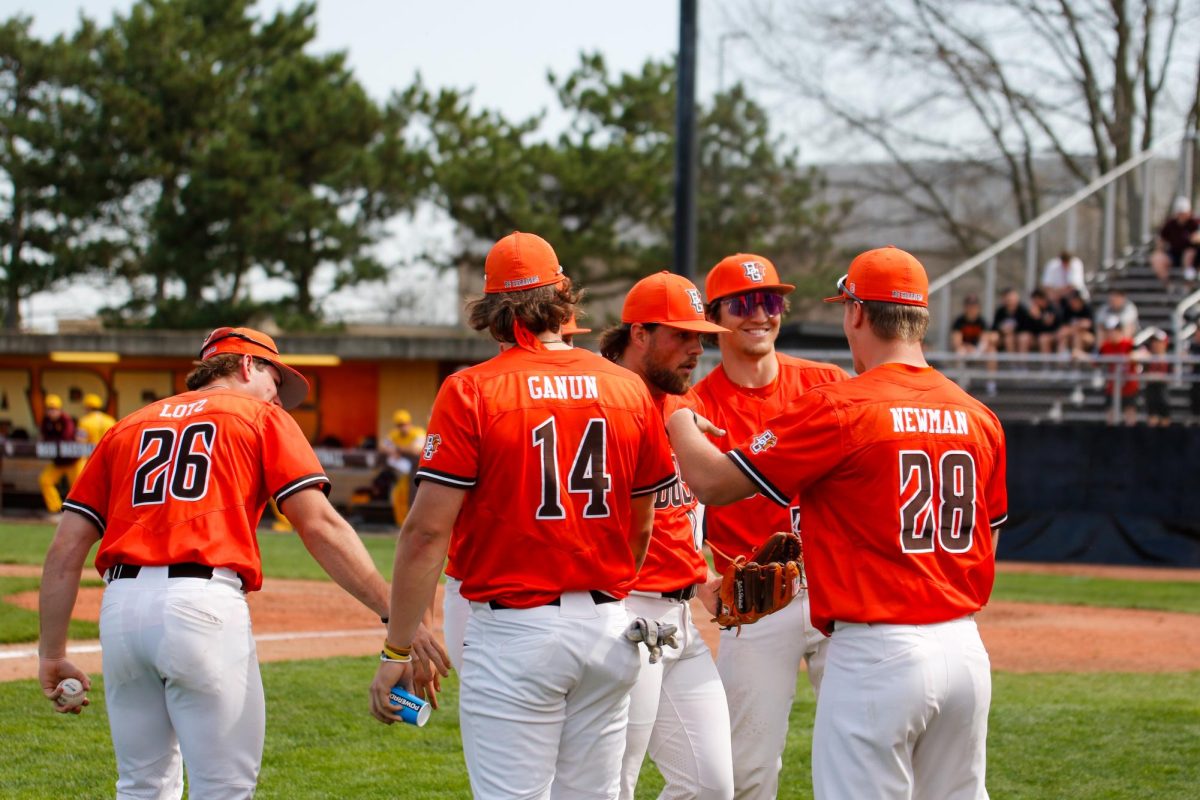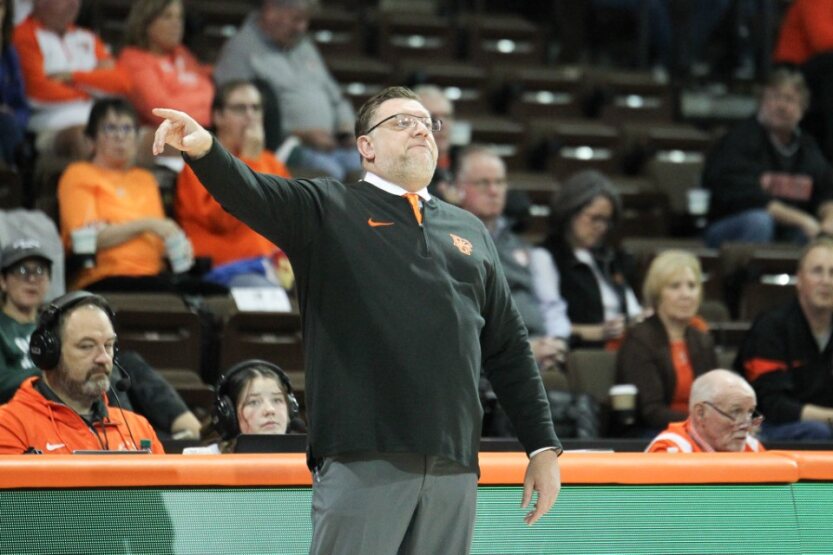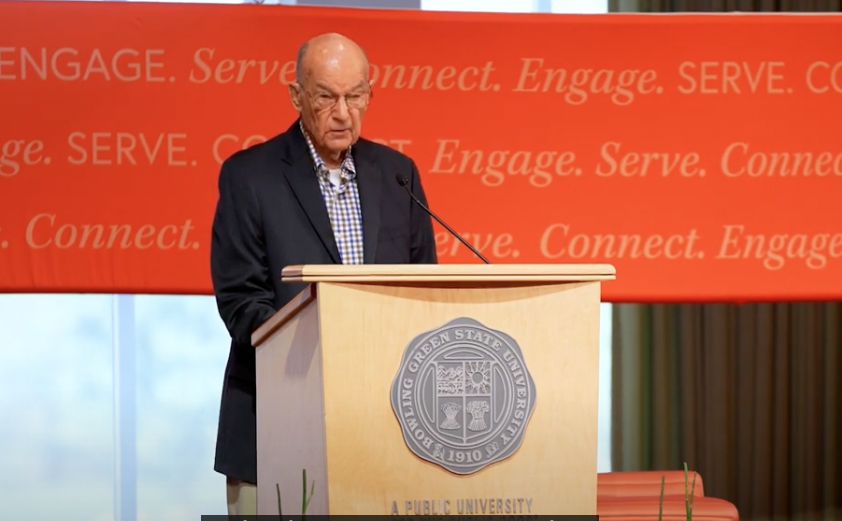“This is a $500 trick: he will pick a girl up and take her out for a big dinner. Afterwards, they’ll go by the pharmacy, and he’ll pick up some Exlax. He then takes her back to his house. The woman stands on top of his glass table, and she does what comes naturally. Or if he doesn’t want that this time, he will have her put razor blades between her fingers and have her touch him until he sees some blood.”
“Pretty Woman” it isn’t.
By separating fact from fiction on street level prostitution, Dr. Celia Williamson, an assistant professor of social work at the University of Toledo, tries to shed light on
the realities and burdens of street prostitution in Toledo.
Williamson has been studying prostitution in Lucas County for the past 10 years and says it is a problem most people do not want to deal with.
“Before I got involved, whenever I would be driving my kids to school or myself to work, I would see these women standing on the corner. I used to look the other way, too, but there are only so many years you can tell your kids that these women are just waiting for the bus. So I decided to do something about it.”
For six months and three weeks, Williamson roamed the streets of Toledo,
researching every pimp, crack house and drug dealer in the area.
“There were times I was scared. I went into this one pimp’s house, and I was like that guy from ‘Crocodile Hunter’, trying to get as close to the animal as possible without getting bitten in the process,” Williamson said.
Not only did she write a thesis on prostitution, but she also created an organization that could help stop it called Second Chances.
Williamson believes educating and raising people’s awareness about the issue serves as the most important element of the program.
Second Chances employs case mangers who work with the women to develop individualized goals and services to meet their needs.
It also works with other social service agencies to teach them how to better treat both the emotional and physical needs of prostitutes, and educates the public and police about street-level prostitution.
One major point of her thesis deals with the financial burden prostitution poses on the city and taxpayers, and what needs to be done in order to reduce it.
According to Williamson’s research, prostitution in Toledo is costly, and citizens are paying the price.
“Every time you arrest a prostitute in Toledo, it costs the city $2,000. The average woman is picked up 27 times per year,” said Williamson.
That means taxpayers are paying an average of $54,000 for every prostitute. Williamson says Toledo officials can cut that cost if they start to change some policies.
Currently, the city of Toledo has an arrest and release program for prostitutes- Because they have not committed a violent crime and there is a limited amount of jail space, they are only given a court date.
“If you are street wise you don’t show up to that date. If you are arrested again you’ll just be released and given another court date, and the cycle will repeat itself. That’s why we need to do something different,” Williamson said.
Williamson also believes that the police and the community need to start to shift their focus from the prostitute to the customer. In order to start to effectively address the
issue, the community needs to look at more than just one side of the equation.
Mary Krueger, director of Bowling Green State University’s Women’s Center, agrees.
“We need to be looking at who the police are arresting, and who they are charging. There some communities that have done things like printing the pictures of men who have been with the prostitute in the newspaper,” said Krueger.
According to Williamson, 90 percent of the time police will arrest the prostitute and not the customer. Men are not arrested as much when they put a decoy on the streets because it costs the department time and money.
This she said is only one of the many cracks in Toledo’s judicial system.
The second area Williamson’s research looks at is the correlation between prostitution, violence and police negligence.
According to Williamson, most sex in Toledo occurs in the back of a car and last for 15 minutes at the most. There is no kissing, there is no romance. However, in that short amount of time, on average, 70 percent of prostitutes have been abused
by their customers.
Williamson describes how one customer forced a prostitute to sit down on a gearshift. The woman suffered major internal bleeding. When she contacted the police, they said they were not willing to help her because she put herself in that situation.
She has known women who have been branded with fire pokers, kidnapped, locked in trunks, and mutilated. Some girls have become accustomed to carrying a razor
blade underneath their tongue for protection says Williamson.
“The problem here is who are they supposed turn to when something happens? Police do not see a prostitute as a credible victim. They blame her for putting herself in that situation, telling her she deserved it,” Williamson said.
Both Krueger and Williamson agree that police need to step in and protect these women.
“Prostitutes are women, and the fact that this happens to be your work doesn’t mean your body is fair game. People cannot beat you, rape you with impunity,” Krueger said.
Williamson and members of Second Chances have taken steps to try to get the Violence Against Women Act, which was created to give aid to women who have been victims of violence, to extend to women in prostitution. However, their attempts have
met with little success.
“Not one penny has gone to these women. You have to remember that they are faced with a triple threat: most see domestic violence at home, customer-related violence at work, as well as pimp related violence,” Williamson said.
Despite this unsuccessful attempt, her program has succeeded in keeping itself alive since 1993. This is a contrast to earlier government programs aimed at cutting prostitution that were thrown into the area and were shut down only after a
few months.
“A lot of mistakes these organizations tend to make is that they are creating a program for certain people without ever talking to those people. When the program failed they blamed the people. Not me, I went out and talked to them and listened to
them,” Williamson said.


















